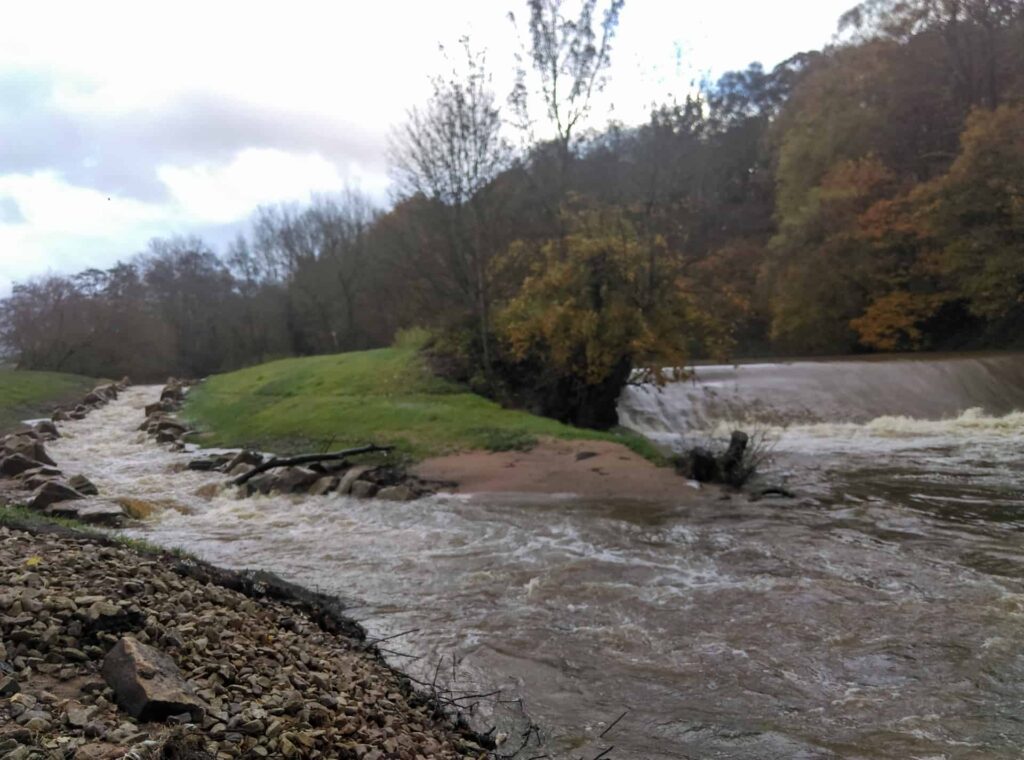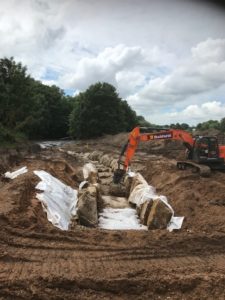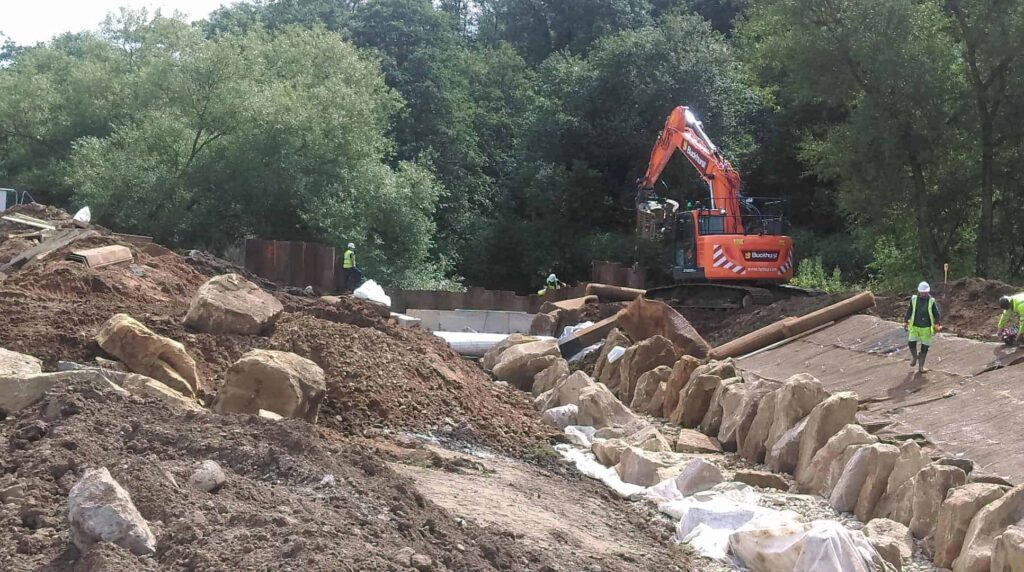
Work on our latest close to nature fish bypass channel has now been completed and the structure is already functioning well. The work, completed as part of our Ribble Life for Water project, has been funded by the European Agricultural Fund for Rural Development. Carried out with our delivery partners, Wade Group, this bypass channel will now be monitored closely to determine which species use this channel, and how quickly they adapt to using this pass.
Holland Wood Weir lies on the River Darwen, close to its confluence with the River Ribble and the limit of the tidal Ribble area. The weir was originally constructed to provide water to the nearby Walton Mill, which historically milled corn and flour. Although the mill, which is now operated by Massey Bros, still exists the weir has been out of use for some time.
At over 3 metres high, 10 meters long, and 26 metres wide the weir is now a redundant man-made barrier to local and migratory fish. It is thought that eels are the only species that is able to move up and down the river, although many other species such as salmon, brown trout, minnow, chub, roach, gudgeon, stoneloach, stickleback, flounder, and bullhead are present in the area. Additionally, the weir causes other problems, with the creation of incision downstream, and gravel and silt deposition upstream.

The fish passage is close-to-nature bypass channel, similar in design to the one created at Oakenshaw in 2017. This channel will redirects 5-10% of the rivers flow into a separate, specially designed channel which can be used as an alternative route upstream for migratory fish.
This project is funded by the European Agricultural Fund for Rural Development.
This construction work is adhering to Government and Construction Leadership Council guidance for COVID-19.


